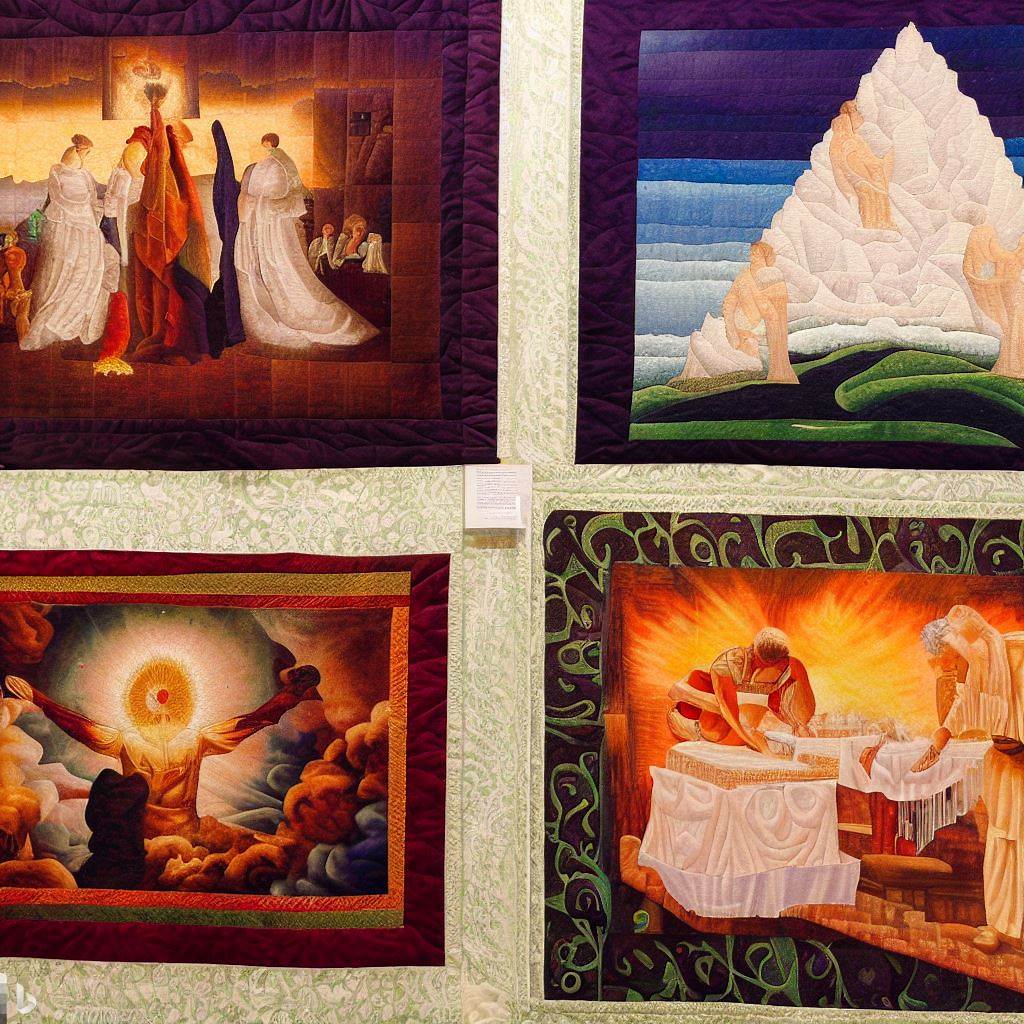The Quilting Renaissance: Reviving Traditional Techniques
After quilting’s popularity declined in the mid-20th century, the past few decades have brought an explosive renaissance. Contemporary quilters are not only mastering traditional techniques but also advancing the art form in groundbreaking ways. This revival emerges from deep respect and curiosity about quilting heritage coupled with bold creative vision. By honoring past practices while exploring new modes of expression, today’s quilting renaissance enlivens powerful historical connections through cloth and stitches.
Appreciating the Evolution of Quilting Traditions
Understanding quilting’s rich past provides context to identify, value, and replicate antique techniques critical for sparking the modern renaissance.
Humble Beginnings Out of Necessity
Early American settlers crafted quilts out of necessity for warmth in sparse environments. Women recycled tiny fabric scraps into blankets stitching by hand. These homespun beginnings birthed beloved patterns like Log Cabin and Nine Patch.
Developing Distinct Regional Styles
By the early 19th century distinctive quilting styles emerged rooted in different cultural and geographical regions. Pennsylvania quilts featured intricate motifs while New England quilts displayed simpler floral sprays. Regional influences create quilting diversity.
Rising Interest in Craftsmanship
As fabric became more available, women had resources to perfect techniques. Mid-19th century quilts displayed exquisite hand appliqué, embroidery, and quilting patterns reflecting pride in craft. Skill marked status.
Industrial Age Decline in Popularity
With mass production of blankets around the 1920s, quilting became less essential. The practice fell out of mainstream popularity as an emblem of an earlier age. Some isolated pockets persevered, but quilting largely lost prominence.
Quilting’s Low Point Mid-Century
By the 1950s and 60s quilting reached its nadir, seen as an outdated relic. Stitches were loose, patterns simple. Few recognized quilts’ artistic potential or cared to learn proper technique. The craft hit bottom.
Sparking Renewed Passion and Curiosity
By the 1970s, sewing hobbyists and artists sparked renewed mainstream interest in discovering quilting’s history and reviving techniques.
Groundbreaking Art Quilt Innovators
Artists like Michael James created conceptual quilted fiber art in the 70s and 80s, proving quilts’ artistic capabilities beyond function. His abstract geometric work revealed inspiring new possibilities for the medium.
Researchers Studying Traditions
Quilt historians researched fading local and regional quilting traditions and published books documenting patterns, techniques, and oral histories. Their scholarship preserved precious knowledge.
Pioneering Teachers Cultivating Skills
Early teachers like Elly Sienkiewicz studied antique quilts then developed curriculum to pass on revered hand techniques like Baltimore Album style appliqué. Their instruction shaped new generations.
Quilting’s Visibility Through Shows and Guilds
A resurgence of quilting guilds provided networking and exhibitions to reinforce community. Major quilt shows offered the first prominent display space to recognize quilts as art.
Retailers Meeting Growing Demand
As interest grew, independent shops emerged specializing in fabrics, supplies, and tools for quilters. Retail offerings fueled further engagement and escalated quilting’s revival.
Mastering Traditional Techniques in New Contexts
For today’s quilters, learning traditional handwork skills allows them to honor past practice while advancing the form.
Hand Piecing and English Paper Piecing
Piecing quilts by hand using simple running stitches gives connection to early quilters’ processes and rhythms. Hand work fosters mindfulness.
Hand Appliqué and Reverse Appliqué
Intricate hand appliqué fell out of fashion but is beloved today for dimension and precision. Needle turn and reverse appliqué create tactile depth and elaborate motifs.
Classic Block Patterns and Setting Types
Reinterpreting vintage block patterns like Log Cabin variations or intricate sampler quilts links past to present. Layouts like Medallion or Irish Chain teach historic design.
Embroidery and Specialty Stitches
Heirloom quilts often featured decorative embroidery. Learning fancy stitches like French knots or featherstitching adds embellishment. Specialty threads lend dimensionality.
Hand Quilting and Trapunto
Hand quilting provides an unparalleled level of control and texture. Intricate motifs require expertise. Trapunto stuffing adds dimension. Hand quilting reclaims time-honored quality.
Fusing Old and New: The Quilting Renaissance
Today’s art quilts fuse venerable techniques with fresh ideas, creating an exhilarating renaissance that constantly pushes boundaries.
Teaching Traditional Skills to New Generations
Modern teachers and makers help hand techniques thrive by sharing them creatively online and in workshops geared to contemporary quilters. Passing knowledge sustains traditions.
Highlighting Diverse Makers Past and Present
Recent books and exhibits showcase underrepresented quilters. Spotlighting diverse voices from quilting’s history reinforces inclusivity goals for the future.
Improvisation and Spontaneity
Art quilters like Victoria Findlay Wolfe use improv piecing and collage techniques for freeform self-expression reminiscent of abstract painting. Their rule-breaking mode revitalizes quilting.
Incorporating Digital Technology
Printing photos and digital art onto fabric using inkjet printers allows limitless image possibilities. Technology moves quilting decisively forward.
Fusing Quilting with Mixed Media
Art quilters increasingly incorporate painting, printing, embellishment and nontraditional materials like metal, plastic, and resin to create conceptual mixed media fiber art. These combinations push boundaries.
Preserving Heritage While Advancing Artistry
The quilting renaissance flourishes by both mastering age-old hand techniques and unfettering creative vision. This ethos gives breathtaking license to innovate within traditions. Just as patches come together in a quilt, generations of makers are stitched into a story where every contribution builds on those before to continuously reinvent an enduring craft.
